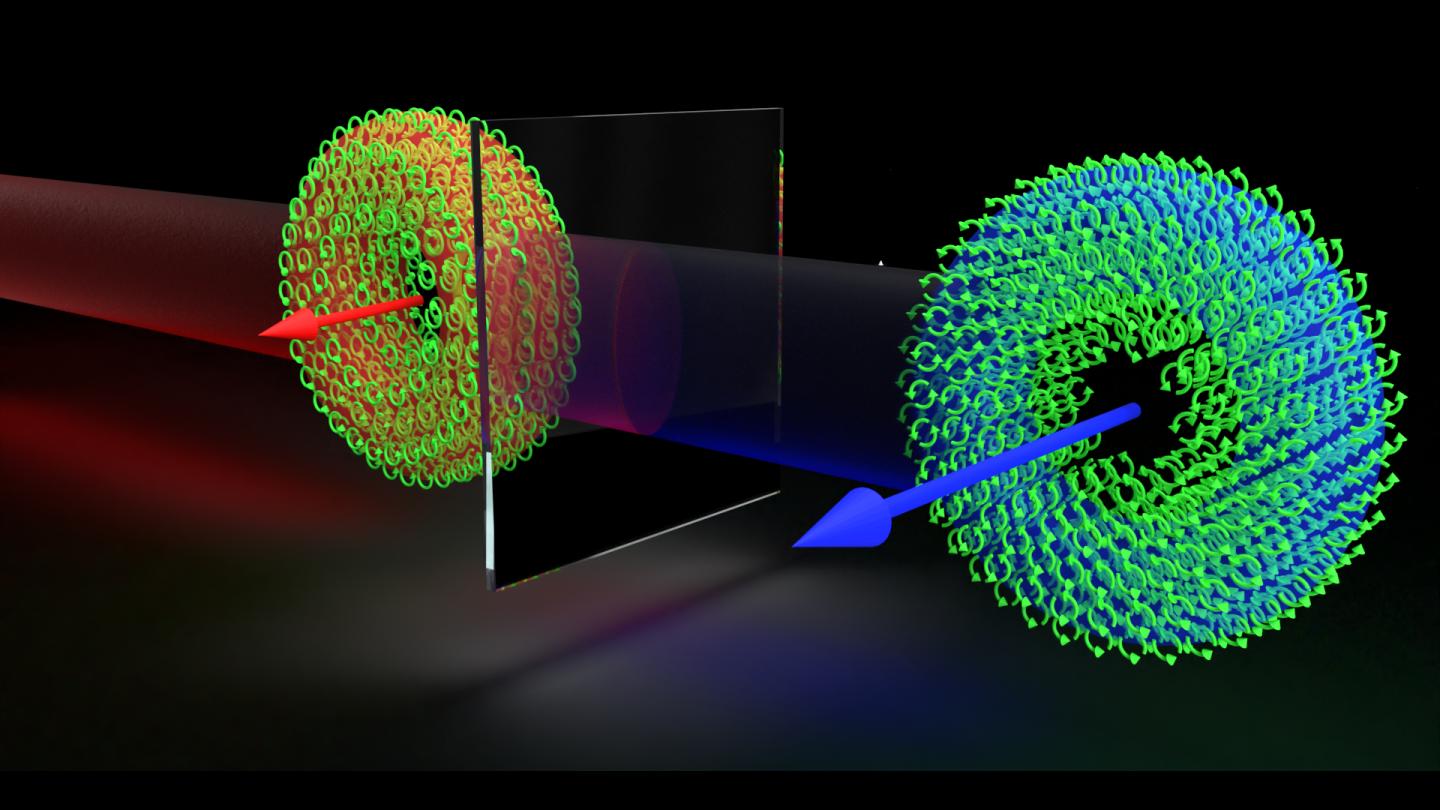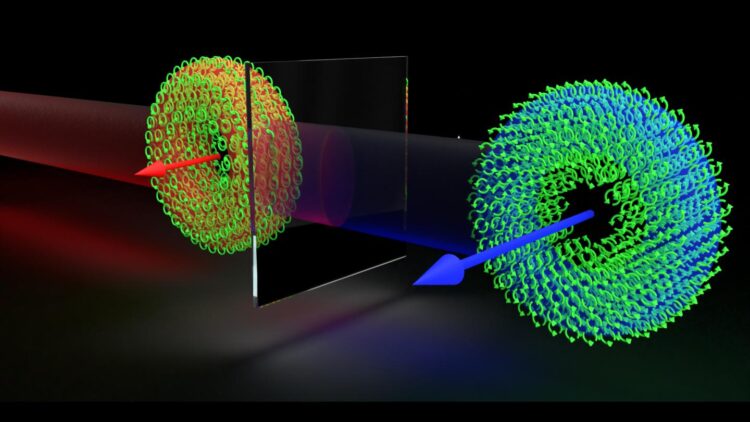
Credit: Hancock, Zahedpour, and Milchberg/University of Maryland
Spinning or rotating objects are commonplace, from toy tops, fidget spinners, and figure skaters to water circling a drain, tornadoes, and hurricanes.
In physics, there are two kinds of rotational motion: spin and orbital. Earth’s motion in our solar system illustrates these; the daily 360-degree rotation of Earth around its own axis is spin rotation, while Earth’s yearly trip around the sun is orbital rotation.
The quantity in physics defined to describe such motion is angular momentum (AM). AM is a conserved quantity: given an initial amount of it, it can be broken up and redistributed among particles such as atoms and photons, but the total AM must remain the same. AM is also a vector: it is a quantity that has a direction, and this direction is perpendicular to the plane in which the rotational circulation occurs.
For particles of light in laser beams – photons – these two kinds of AM are present. Photons have spin, but don’t rotate on their own axes; instead, the spin angular momentum (SAM) comes from the rotation of the photon’s electric field, and SAM can only point forward or backward with respect to the beam direction.
Photons in laser beams can also have orbital angular momentum (OAM). The simplest laser beam in which photons have OAM is the donut beam: if you shine such a beam on the wall, it will look like a bright donut or ring with a dark center. The OAM vector also points forward or backward, and the OAM is the same for every photon in the beam.
In a paper published in the journal Optica, University of Maryland Professor Howard Milchberg and research group demonstrate the surprising result that photons in vacuum can have OAM vectors pointing sideways, at 90 degrees to the direction of propagation – a result literally orthogonal to the decades-long expectation that OAM vectors could only point forward or backward.
The research team, which in addition to Milchberg includes graduate student and lead author Scott Hancock and postdoctoral researcher Sina Zahedpour, did this by generating a donut pulse they dub an “edge-first flying donut” (its more technical name is spatio-temporal optical vortex, or STOV). Here, the donut hole is oriented sideways, and because the rotational circulation now occurs around the ring, the AM vector points at right angles to the plane containing the ring. To prove that this sideways-pointing OAM is associated with individual photons and not just the overall shape of the flying donut, the team sent the pulse through a nonlinear crystal to undergo a process called second harmonic generation, where two red photons are converted into a single blue photon with double the frequency. This reduces the number of photons by a factor of 2, which means each blue photon should have twice the sideways-pointing OAM – which is exactly what the team’s measurements showed. The AM of the flying donut or STOV is the composite effect of a swarm of photons somersaulting in lockstep.
There are numerous potential applications of STOVs. For example, the AM conservation embodied by somersaulting photons may make STOV beams resistant to breakup by atmospheric turbulence, with potential application to free-space optical communications. In addition, because STOV photons must occur in pulses of light, such pulses could be used to dynamically excite a wide range of materials or to probe them in ways that exploit the OAM and the donut hole.
“STOV pulses could play a big role in nonlinear optics,” says Milchberg, “where beams can control the material they propagate in, enabling novel applications in beam focusing, steering, and switching.”
###
The A. James Clark School of Engineering at the University of Maryland serves as the catalyst for high-quality research, innovation, and learning, delivering on a promise that all graduates will leave ready to impact the Grand Challenges of the 21st century. The Clark School is dedicated to leading and transforming the engineering discipline and profession, to accelerating entrepreneurship, and to transforming research and learning activities into new innovations that benefit millions. Visit us online at eng.umd.edu.
Media Contact
Kara Stamets
[email protected]
Original Source
https:/
Related Journal Article
http://dx.





